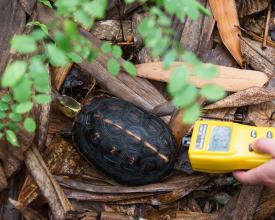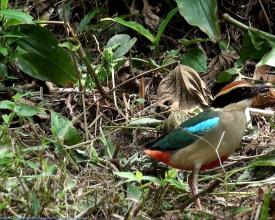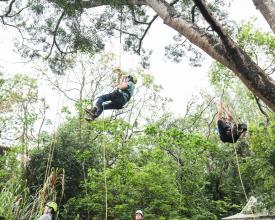
The Ecotourism of Reservoirs Drives Habitat Conservation and Ancient Tree Protection

The Hushan Reservoir, constructed since 2001 at the western foot of the Douliu Hills, negatively impacted the local low-altitude forest gene pool and the habitats of endangered species such as the Pitta nympha and Cuora flavomarginata, prompting conservation measures. From 2007 to 2015, the Endemic Species Research Institute conducted ecological surveys in the reservoir and its surrounding forests. Special attention was given to the relocation conservation and research of the Class I protected species, Cuora flavomarginata. The Hushan Reservoir Cultural and Ecological Conservation Association was formed during the construction phase and has collaborated with government agencies since 2009, engaging youth and elders in community-building initiatives. These activities included long-term ecological resource surveys, local patrols, tracking studies on released Cuora flavomarginata and the preservation of ancient trees. The solution succeeded in promoting local industry development and enhancing eco-tourism within the reservoir.
Impacts
The Hushan Reservoir Cultural and Ecological Conservation Association, in collaboration with the government resources, engaged in various ecological conservation projects, serving as a guardian of both local culture and ecosystems. Since 2009, they have recorded 18 mammal species, 24 bird species, 16 amphibian species, and 9 fish and crustacean species in the Hushan Reservoir and its surrounding areas. In 2022, they partnered with the Endemic Species Research Institute to conduct tracking studies on released Cuora flavomarginata and trained over 30 residents as community tour guides. They promoted activities such as tree climbing, community-based processing of local products, and ecological nighttime observations, resulting in an annual increase of 1,500 visitors. Additionally, they collaborated with three nearby schools and educated nearly 500 children on environmental topics. In recent years, they have trained nine local tree climbing instructors through tree climbing activities and preserved ten ancient trees as a part of environmental education training. With a focus on developing community-based ecotourism, the association aims to attract young people back to the area and create a vision of coexistence between humans and the environment.



